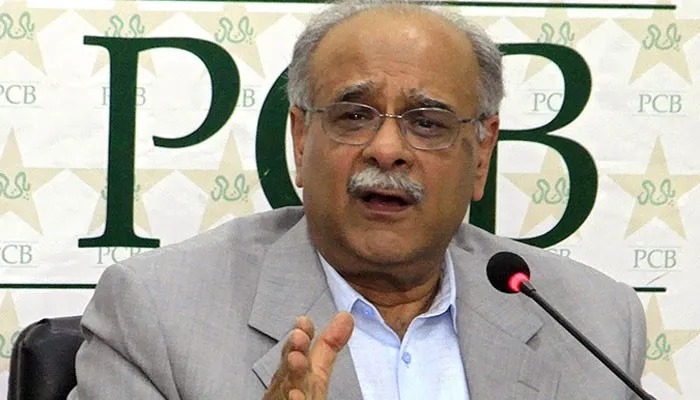
There is a lot of talk on social media about the Najam Sethi press conference. Some have even expressed apprehension about Pakistan’s participation in the World Cup in India. Sethi, understandably has paraded the politically correct line, that it is the Pakistan government’s call and not the Pakistan Cricket Board’s decision to make. That was always the case, and he hasn’t said anything new.
Now let’s explore his statement in greater depth. At this point, Pakistan has one of the best 50-overs teams in the world. Not long ago, they made it to the top of the ICC’s ODI rankings. Which government with even an iota of sense would want to deprive cricket fans of a chance to see their team mount a title challenge in India? Such a move would surely be a political own goal.
Personally, I don’t think there’s any threat of Pakistan boycotting the World Cup. What Sethi did at the press conference was mere posturing. A kind of quid pro quo. Just as India made Pakistan stew for a few weeks before signing off on the Asia Cup, this is the PCB’s attempt to pay India back in the same coin.
I say this because no government of the day in Pakistan is going to risk angering millions of cricket fans by boycotting the World Cup. In a country which has countless problems, cricket offers one of the few rays of hope. The cricket team is one of the few entities that thrives, and has a global profile. They reached the last T20 World Cup final, and are currently No.2 in the ODI rankings. They fancy their chances, especially in Asian conditions. A prime minister who tried to engineer a boycott would win no popularity contests in his own country.
So is there a problem, or will Pakistan come round after a while? Speak to sources in Pakistan, and you’ll know that Ahmedabad is at the heart of the matter. Pakistan clearly don’t want to play there, in a stadium named after the current Indian Prime Minister. That has been the case from day one. RevSportz had reported a while back that the PCB’s wish-list of venues included Kolkata and Chennai. They are comfortable playing in the South and East of India, while thinking that the atmosphere in Ahmedabad could be volatile. If there was any take-away from the Sethi press conference, it was Pakistan’s apprehension about the World Cup’s marquee clash being scheduled there.
Also, Sethi could have said all that he did a day earlier. He did not. He waited for the Asia Cup decision to be made public, before speaking to the media. With the hybrid model approved, he now has something to show his fellow Pakistanis. He also knows that he can bargain with the ICC on a possible venue for the India game. He knows he can force the ICC’s hand to change the venue, for Pakistan’s participation is of paramount importance for the commercial success of the tournament.
So, what’s the way forward from here? Will the ICC take note of Pakistan’s concerns about the venue for the India game, and will the BCCI budge? Or will the BCCI now push back, having allowed the PCB its way on the hybrid model? While India and Pakistan no longer play each other bilaterally, the game off the field is slowly reaching a climax.
Can the ICC and even the Asian Cricket Council (ACC), which helped get the hybrid model approved, now weigh in and stand by India? Can all the other participating nations help the ICC and BCCI get the venue of their choice, or will the PCB successfully play the government card? If it does, there is little that the ICC can do. Between a venue and no participation – even if claims of a threat to the Pakistan team’s security are false – we know which is more acceptable.
For now, the World Cup schedule is still very much up in the air, with the PCB and Sethi central to the narrative. Sport has always been political. This press conference was a prime example of that.



